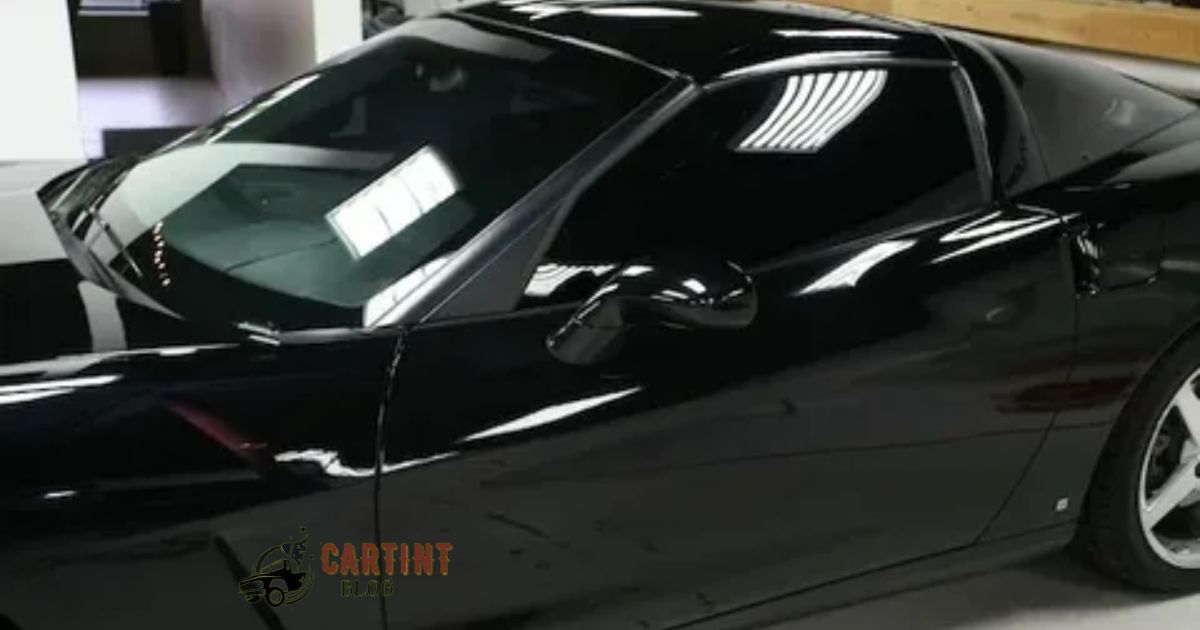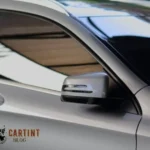How To Tint My Car Windows Permanently?
Tinting your car’s windows is a great way to improve privacy, reduce heat from sunlight, and even make your car look cooler. The right window tint can transform the interior environment of your car. But choosing a permanent tint that actually lasts is key.
When it comes to tinting your car windows, you have two main options – dyed films or metalized films. Dyed tint films are embedded with dye that blocks light. The more dye, the darker the tint. But dyed films also fade faster, especially with exposure to sunlight. Metalized films have a super thin metal coating that reflects more heat. This makes metalized tint last longer – typically 5 years or more.
How do you give your car windows a permanent tint? The key is going with a high quality metalized window film. Have the tint professionally installed by an experienced shop as well. Proper installation is crucial for ensuring the tint bonds correctly to the windows and avoids bubbling or peeling over time. Taking care of the tint with window cleaning products made for tint will also extend its durability. With the right tint and proper maintenance, you can enjoy permanently darkened windows.
How To Tint My Car Windows Permanently?
Permanently tinting your car windows allows you to reduce heat and glare, increase privacy, and even make your car look cooler. But choosing the right window tint is crucial for ensuring it lasts.
What Makes Car Window Tint Permanent?
When it comes to tinting car windows, you have two main film options:
- Dyed films – These are embedded with dye that blocks light. The more dye used, the darker the tint. However, dyed films tend to fade faster from sun exposure.
- Metalized films – These have a thin metal coating, like aluminum, that reflects heat. This makes metalized films last longer – typically over 5 years.
So what gives car window tint real longevity? Using a high quality metalized film is key for permanent results. This type of tint withstands sun damage and resists fading, peeling, and bubbling.
Here are factors to ensure your tint is permanent:
- Metalized film – Go for dyed metal or carbon metal films.
- Infrared blocking – This reduces heat from sunlight.
- Nano-ceramic coating – Adds a protective barrier to repel elements.
- Professional installation – Improper installation leads to premature failure.
With the right metals and coatings, you can enjoy permanently tinted windows for 5 years or longer.
How To Tint Car Windows With Spray
Spray tints offer an easy, cheap way to tint your car’s windows. To apply them, clean the windows thoroughly and mask off any edges you don’t want to tint. Shake the spray can for 60 seconds before use and hold it about 8 inches from the glass when spraying. Apply light, even coats allowing the tint to flash off between applications. Allow the final coat to cure for 24 hours before rolling up the windows.
When using spray tints, such as ceramic tint for windows, less is more. Applying too much tint can lead to running and uneven coverage. Do multiple light coats for the best results. Make sure to use painter’s tape to protect surfaces you don’t want to tint. Practicing your spray technique first on scrap windows is also a good idea for amateurs. What are the benefits of using a ceramic tint for windows?
Choosing the Right Tint Level
How dark you can legally tint your car windows varies by state. Most states allow:
- Front windshield – Non-reflective tint on top portion only
- Front side windows – 35-50% visible light transmission (VLT)
- Back side & rear windows – Any darkness allowed
Having the shop test and document your film’s VLT is recommended. This ensures it meets state laws. Too dark of tint risks fines, so verify what’s allowed in your state first.
Here are common VLT percentages for tint darkness levels:
- 85-100% – Lightly tinted
- 65-85% – Medium tint
- 35-65% – Dark tint
- 15-35% – Very dark tint
Ultimately the darkness you choose impacts aesthetics, glare reduction, heat blocking, and privacy level.
Professional vs. DIY Window Tinting
While do-it-yourself (DIY) tinting car windows is possible, going professional has big advantages:
| Benefit | Professional Tint Shop | DIY Tinting |
| Results | Flawless finish without bubbles, debris under tint | Higher risk of imperfections |
| Speed | Completed in 2 hours or less | Takes 4+ hours for first-timers |
| Legality | Ensure darkness meets state laws | Harder to confirm visible light transmission |
| Warranty | Lifetime warranty on film & labor common | No recourse if mistakes made |
| Equipment | Pro tools like auto glass trimmer for clean cuts | Limited to basic razor blades |
| Experience | Years of specialized training | First-time learning curve |
In most cases, professional window tint installation beats DIY for speed, quality of results, and longevity of the tint. The incremental cost is well worth it.
How To Tint My Car Windows Permanently At Home
Installing permanent tint on your car’s windows at home involves careful prep and using a high-quality metalized film. First clean the glass thoroughly and mask off any edges. Measure each window and cut the tint to size with a sharp razor, rounding the corners. Mist soapy water on the glass before applying the film. Use a squeegee to adhere it evenly. Trim excess tint and seal the edges.
Maintaining your DIY tint job is crucial for longevity. Let the film cure completely before rolling up windows. Only clean the tint with microfiber cloths and specialized cleaners, never ammonia-based ones. Reapply edge sealer every 6 months to protect from lifting. Avoid using harsh scrubbers or chemicals on the glass. Being gentle will keep your home tint job looking good for years.
Step-by-Step Guide to DIY Car Window Tinting
If you do opt to tint your own car windows, follow this process:
Supplies Needed
- Automotive window tint film
- Spray bottle with soapy water
- Squeegee
- Lint-free cloths
- Razor blades
- Ruler
- Masking tape
- Heat gun
Optional:
- Edge sealer
- Window tint application solution
Prep the Window
Follow these steps to prep each window:
- Clean inside and outside of window thoroughly
- Inspect window seals for any gaps or cracks
- Roll windows all the way down
- Mask off edges with painter’s tape
This prevents overspray and ensures clean tint lines.
Cut the Tint Film
To cut the film correctly:
- Measure each window horizontally & vertically
- Transfer measurements to the tint film
- Place ruler on film as a guide
- Use a new razor blade on every cut for clean edges
- Round the corners of the film
Curved edges help the film adhere better.
Mount the Tint
Now mount the film on the glass:
- Mist soapy water solution onto window
- Remove outer liner from tint film
- Carefully apply film to window, using soapy water to reposition
- Use squeegee to remove moisture & air bubbles
- Trim excess tint with a razor blade
- Apply edge sealer if desired
Take your time during installation for best results.
Cure & Maintain the Tint
After application:
- Leave a small gap in the windows for 1-2 days to allow moisture escape and film to cure
- Avoid rolling windows up & down for 1 week
- Only use microfiber cloths and specialized cleaners on tinted windows
- Reapply edge sealer every 6 months
Proper maintenance preserves the darkness and longevity of your car window tint.
Best Spray-On Window Tint
Rust-Oleum Frosted Glass spray offers an easy DIY way to tint windows. It applies smoothly and dries fast without runs. The translucent, frosted effect provides UV protection and privacy while still allowing light through. Reviews praise its ability to coat evenly and stick well without bubbling or peeling over time.
Another top-rated option is VHT Night Shades black tint. Its deep opaque darkness mimics professional film tint. The advanced acrylic-enamel formula resists fading, cracking, and scratching. It also blocks over 99% of UV rays. Just remember to do light coats, slowly building up coverage. Heavy single coats can lead to drips.
Professional Window Tinting Process
When you have the tinting done professionally, you can expect the following process:
- Thorough window cleaning & prep
- Inspection for any window damage
- Advanced cutting tools used for perfectly fitted tint
- Application of high quality film with adhesive side to glass
- Heat gun used to shape film to contours
- Edge sealer added for finished look
Professional tint shops also offer:
- Mobile services at your home/work
- Lifetime warranty on film & labor
- Variety of specialty films like ceramic IR tint
- Documentation of film VLT to prove legality
So while the film materials for DIY vs. professional installation may be the same, the tools, techniques, and expertise make a big difference in the quality and longevity of the results.
How Much Does Professional Window Tinting Cost?
Costs vary based on shop, vehicle, and type of tint but expect to pay:
- Cars: $120 – $400
- SUVs: $250 – $500
- Vans: $300 – $600
Here are the main factors that impact window tinting prices:
Vehicle Type
- Small cars are cheapest, large trucks & vans most expensive
Window Area
- The more glass covered, the higher the cost
Film Type
- Standard dyed films are cheaper than premium nano-ceramic films
Shop Location & Reputation
- Prices are higher in metro areas and for top-rated shops
Additional Services
- Adding extras like door wings, brow tint, or pinstriping adds cost
While professional tinting may seem expensive upfront, considering the quality of materials, specialized labor, and warranty included, most find it worthwhile for the durability and appearance boost it provides.
Maintaining Your Car Window Tint
To maximize the longevity of your tinted windows:
- Wait 1 week before rolling windows up & down
- Keep tint dry for the first 5-7 days during curing period
- Avoid ammonia-based cleaners as these can discolor the film
- Use microfiber cloths & specialized tint cleaners only
- Reapply edge sealer every 6 months to protect from lifting
- Wash with care using soft sponges or towels
Taking proper care of your window tint ensures it lasts for many years. Harsh cleaners and abrasive cloths shorten its durability.
Removing Window Tint from a Car
If you need to take tinted film off for any reason:
Supplies Needed
- Heat gun or high-power hair dryer
- Plastic putty knife
- Razor blades
- Paper towels
- Goo Gone adhesive remover
Process
- Warm window with heat gun to soften film glue
- Insert putty knife under film edge to create tab
- Slowly peel off film at a 90 degree angle
- Use razor blade on any leftover adhesive
- Remove residue with Goo Gone & microfiber cloth
Take care not to crack the actual window glass during removal.
Should You Get Your Car Windows Tinted?
Benefits of tinted windows include:
- Reduced glare – Less eyestrain from bright sun
- Lower temperature – Blocks up to 60% of heat
- UV ray protection – Reduces skin damage
- Enhanced privacy – Harder to see into your car
- Aesthetic appeal – Customized look
Just ensure the shop tests the film’s visible light transmission to confirm it meets your state’s legal limits.
Professional installation using a high end metalized film gives you the permanence to enjoy these benefits for years to come in cooled comfort and style.
Frequently Asked Question
What is the most durable type of car window tint?
Metalized window films with a ceramic coating provide the most permanent, long-lasting tint for cars.
Does DIY or professional installation give better longevity?
Professionally installed tints tend to last longer thanks to expert application and high-end materials.
How long does quality car window tinting last?
With professional installation and proper care, quality metalized tint films can last 5-7 years or longer before fading or peeling.
What reduces the lifespan of tinted car windows?
Factors like low-grade dyed film, poor application, and harsh cleaners can cause tint to fail prematurely after 1-3 years.
How can I make tinted windows last longer?
Caring for car window tint properly by avoiding harsh chemicals, reapplying edge sealer, and using microfiber cloths extends its durability.
Conclusion
Getting a professional-grade permanent tint on your car’s windows involves careful prep work, precise film cutting, expert application, and ongoing maintenance. While DIY kits save money upfront, they often fail prematurely and lack the flawless factory finish of pro installs. Investing in metalized nano-ceramic film applied by seasoned experts ensures your tint withstands sun damage for 5+ years in sleek darkened style.
Ultimately, permanent car window tinting improves comfort, privacy, and aesthetics far longer than lower-cost temporary options. Being gentle with high-quality professional tints also boosts longevity – from using microfiber cloths to reapplying protective edge sealant every 6 months. So skip the spray cans and trust the tint pros for best, longest-lasting results.



